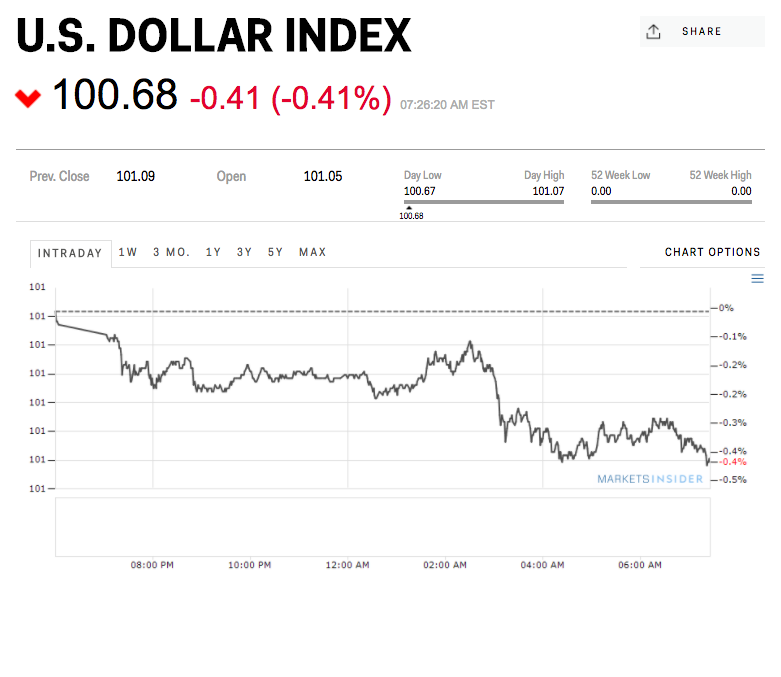The dollar is tumbling.
The US dollar index is down by 0.5% at 100.67 as of 7:37 a.m. ET.
Wednesday saw the greenback touch one-month highs of 101.75 following a slew of strong US economic data.
Separately, Fed Vice Chair Stanley Fischer said on Bloomberg radio earlier on Thursday that the Fed expected “to be moving closer to the 2-percent inflation rate and that the labor market would continue to strengthen. If those two things happen we’ll be on the (policy) path that we more or less expected.”
Meanwhile, US economic data is gearing up for another saturated day with housing starts, building permits, initial jobless, and the Philly Fed claims all out at 8:30 a.m. ET.
As for the rest of the world, here's the scoreboard as of 7:43 a.m. ET:
- The Japanese yen is up by 0.5% at 113.61 per dollar. Earlier, Bank of Japan governor Haruhiko Kuroda warned about low rates. "A new challenge has emerged in the form of low profitability at financial institutions," he said while speaking at an international conference on deposit insurers. "These developments suggest that a different kind of financial crisis could happen in the future." The Australian dollar is little changed at .7705 per US dollar after data showed that the Australian economy added 13,500 jobs in seasonally adjusted terms, beating expectations for a gain of 10,000. However, all of the jobs growth came from part-time employment, which surged by 58,300, offsetting a sharp decline in full-time workers, which tumbled by 44,800. The Russian ruble is little changed at 57.2018 per dollar, while Brent crude oil, the international benchmark, is up by 0.6% at $56.06 per barrel. The euro is higher by 0.3% at 1.0635 against the dollar. The British pound is up 0.3% at 1.2502 against the dollar.

